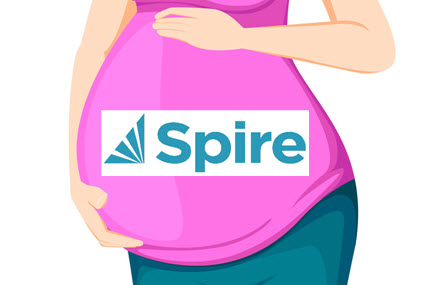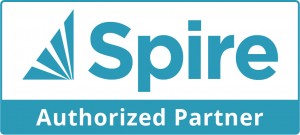You made the big, “do something” decision. You decided to upgrade your old SBT, ACCPAC Pro or Sage Pro ERP to Spire. Congratulations! Now what happens?
G ood question. This email describes a typical Spire implementation. If you know what to expect when you are expecting Spire, the project will not scare you and you might even look forward to it.
ood question. This email describes a typical Spire implementation. If you know what to expect when you are expecting Spire, the project will not scare you and you might even look forward to it.
A typical Spire implementation, from “Let’s go!” to “Go-live!”, takes about two months, faster if you want to go faster. I wrote a piece about the duration of a Spire project two years ago here. Today’s piece is about what happens during a Spire implementation: how it starts, progresses, and ends. Each project is different in the details, but the general process is mostly the same from project to project, client to client.
Preliminary steps.
All Spire jobs start with your requirements. By the time you order Spire, you and I have a good idea of what those requirements are and how Spire will satisfy them. Your server and workstation computers are in place or on order. Key people will be working during the implementation. We have a team leader, and we have a roster of team members assigned to specific tasks and duties. These are the completed, preliminary steps.
Let’s start! Installation and creation of ‘sandbox’ and ‘go-live” companies.
I install Spire on your server and workstations, and I make two Spire companies. The first of these companies is your testing/training ‘sandbox’ company. The second is your ‘go-live’ candidate company. Two companies. Very important.
The sandbox company is where we test everything and train you and your colleagues. The go-live candidate company becomes your live, operating Spire company on day one. The go-live company is kept free of polluting transactions. When you are ready to go live, we turn on the go-live company, refresh its data and retire the sandbox company.
Data conversion – flat files.
Next, I convert the data in your ‘flat’ files in your SBT, ACCPAC Pro or Sage Pro ERP database. Flat files are your customers, ship-to addresses, inventory, inventory locations, vendors, price codes, GL chart of accounts and various other, smaller tables. I also create your Spire users and assign them to the new Spire companies.
You and your team examine the converted database. Is it clean? Is it correct? Is it complete? When you find my mistakes — and you will find mistakes — I correct them.
User training – no fun.
Now user training starts. This is the worst part of the project. You must find some time for this apart from your regular work. It is only a few hours per person, but it necessary.
We have a list of who gets trained and on what and schedule training accordingly. Training can be a formal classroom session (not my favorite) or shorter, directed, personal training on the specific things you and your staff need to know. 95% of our clients choose the directed training. Regardless, all training happens in the sandbox company, none in the go-live candidate.
We try to make Spire training as short and focused as possible. We know you and your staff are busy with your normal work while we are implementing Spire. This is extra work for you.
I make your forms and special reports.
While you are learning Spire, I create your Spire forms. Forms are bids, orders, invoices, PO’s, checks, statements of account and any other custom report. Spire comes with a suite of generic forms and reports. I adapt some of them for you and create others from scratch if needed. I send you samples, you return your comments, and, after a few rounds of this, we settle on your custom forms. Again, all of this happens in the sandbox company. I will install the accepted forms in the go-live company later.
Final, full-cycle testing.
We are near the end. The next step is the big, full-cycle test. In this test, everyone does at least one cycle of their normal work. The purpose of this is to demonstrate that you and your team can, on day one, do what you currently do in SBT/ACCPAC/Sage Pro. Can you do your daily work in Spire? If you cannot, we fix the problems. We will not go live on Spire until you are satisfied Spire will work.
Let’s go live!
You’re ready! You tell me – and you must tell me, I never tell you – you are ready to go live. You are confident you can run your business on Spire. We pick a go-live day. It need not be the last or first day of a month. It can be any day.
Data conversion – Current transactions.
The night before Day One, I print to PDF a set of status reports from SBT/ACCPAC/Sage Pro: AR Aging, AP Aging, Inventory On-hand, GL Income Statement, GL Balance Sheet. I back up your SBT/ACCPAC/Sage Pro. I convert your current transactions from SBT/ACCPAC/Sage into your go-live Spire company using my custom data conversion program. I compare the Spire balances to the old SBT/ACCPAC/Sage Pro aging reports. I compare the inventory counts and values to the old values. They should match to the penny. It is a busy night for me.
And the next morning you are live on Spire!
On Day One, we (usually two of us) are on call to deal with Day One issues. If we did our job correctly, there are very few issues. We are there on day two as well, if you wish, but usually day two is calm.
The first month.
Now you are doing all of your day-to-day work in Spire. There will be other, “phase 2” tasks for us in the near future. We usually have a short list of “phase 2” Spire tasks. Now we tackle the items on this list and add new tasks as needed.
No so bad, right?
And that is it. When the project is broken up into logical, digestible pieces, the project is far less daunting than it looks at first glance.
Our Spire implementation process works well. We have used it (as of this writing) twelve times successfully with, so far, no failures. You can be our thirteenth success.
And now you know what to expect when you are expecting a new Spire.
-Matthew Lefkowitz, Lefkowitz Systems, Inc., May 2021.
Ready to start? Contact us here.

